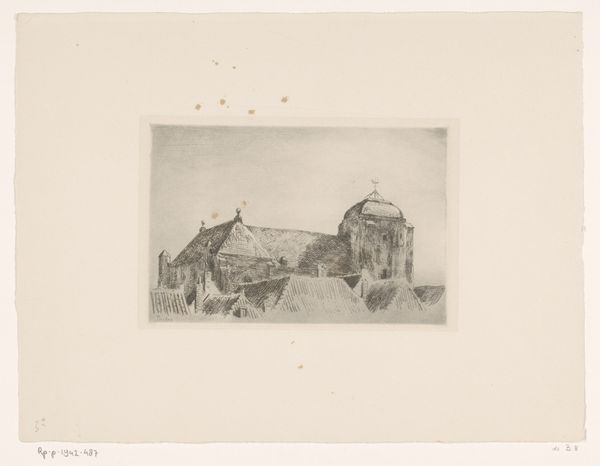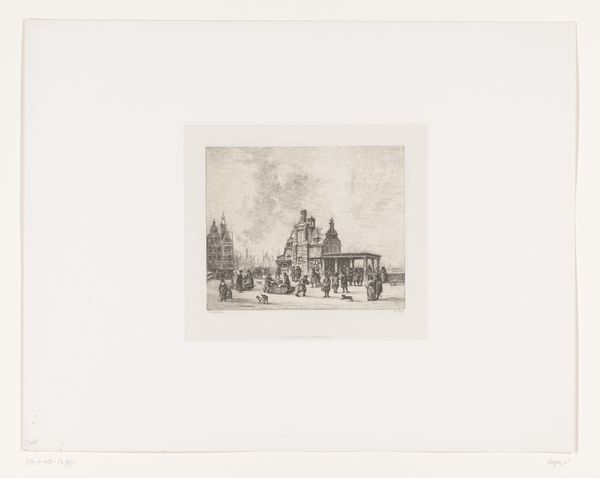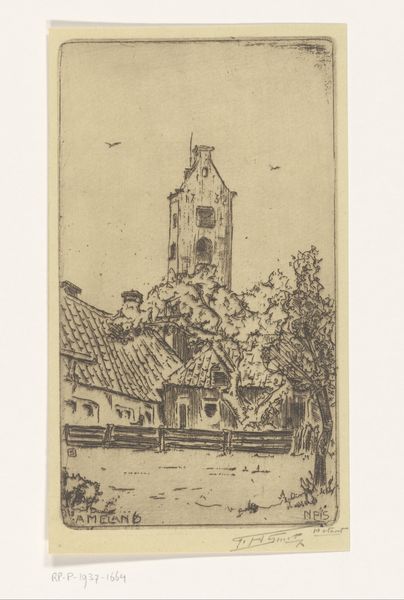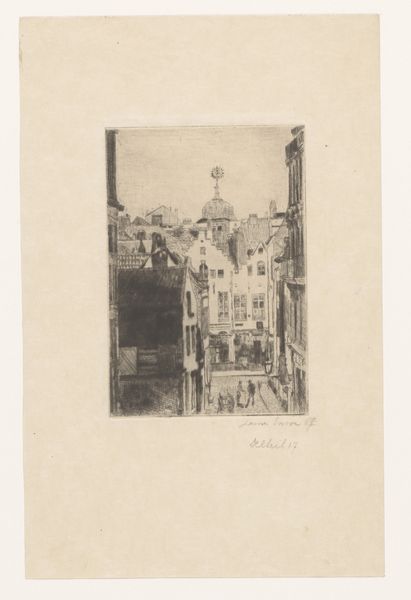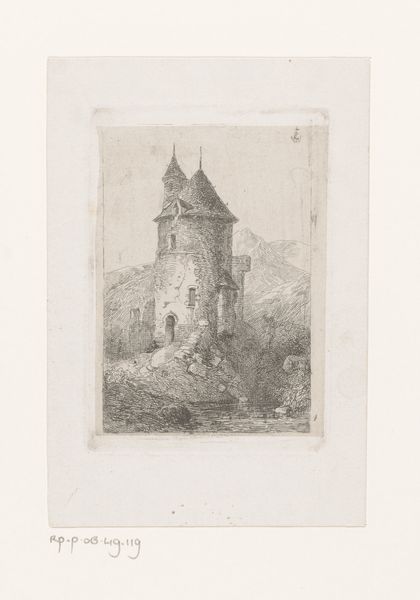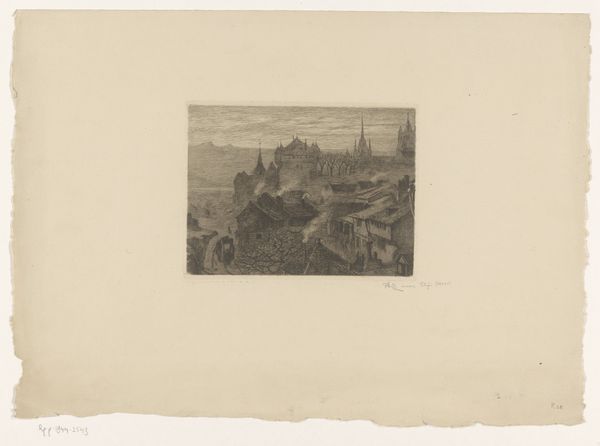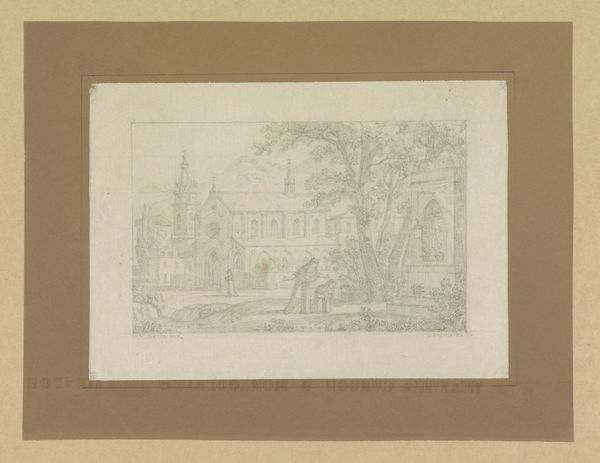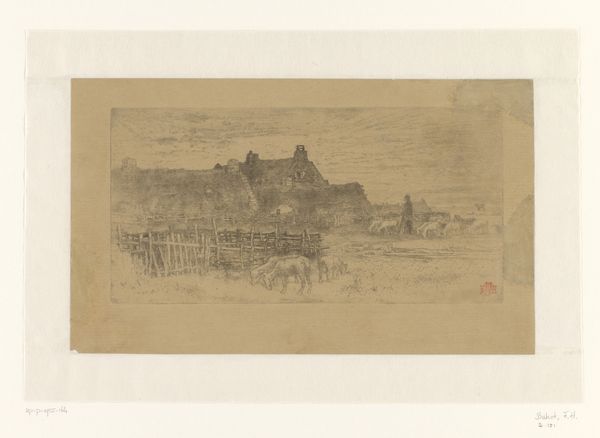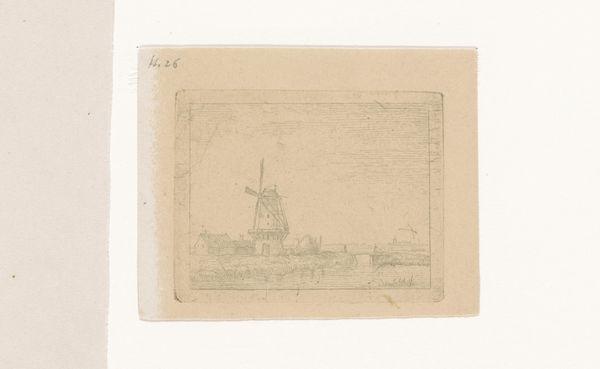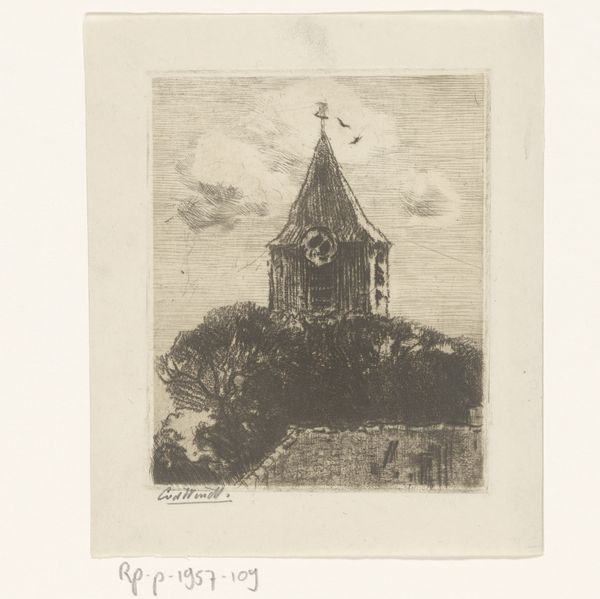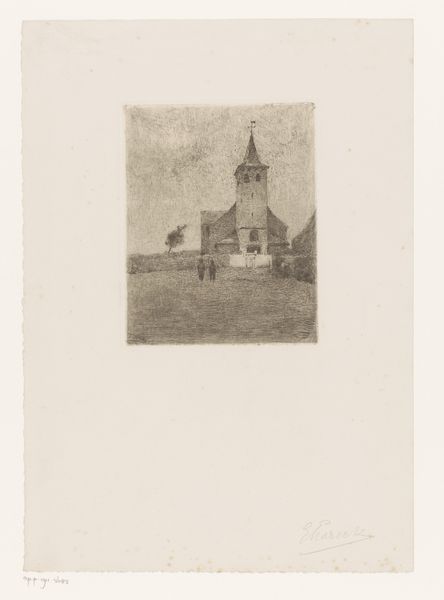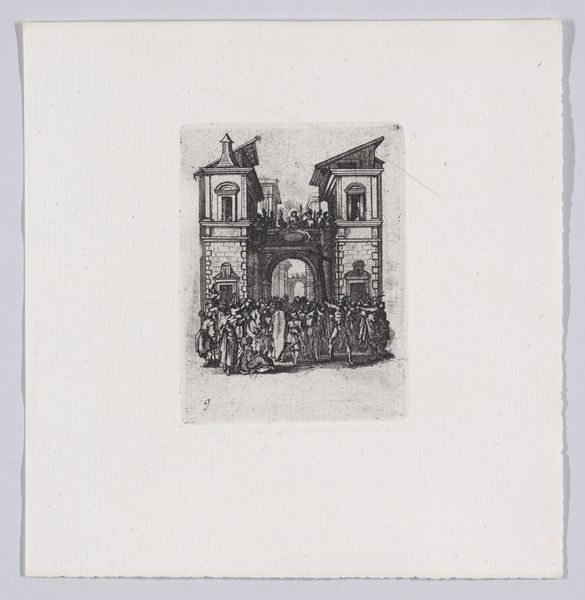
drawing, print, etching, paper
#
drawing
#
medieval
# print
#
etching
#
paper
#
cityscape
Dimensions: height 69 mm, width 57 mm, height 93 mm, width 82 mm
Copyright: Rijks Museum: Open Domain
Editor: We are looking at Etienne Bosch's etching on paper, titled "Dorp," dating circa 1873-1931. It has a very rough and sketch-like feel. How do you interpret this work? Curator: What strikes me is the conscious anachronism, even for its time. The scene evokes a medieval settlement dominated by the church tower, but created during a period of immense social and technological change. Given Bosch's context, how might we consider this artistic choice? Was it a rejection of modernity, or a re-imagining of it through a nostalgic lens? Editor: Interesting. I hadn't thought about it that way. Maybe a critique of industrialization, like looking back at a simpler time? Curator: Exactly. And what does it say about power structures? The church looms large, but is it a symbol of hope or oppression, especially considering the various social upheavals of the late 19th and early 20th centuries when it was made? Are the rough lines a sign of stability, or instability and a world under construction? Editor: It could definitely be either. The cross-hatching does look almost like the whole city is about to fall apart. Curator: Consider that, in post-apartheid South Africa, reflecting on European medievalism also meant reckoning with its legacy within colonial narratives. What responsibility do artists have when engaging with potentially romanticized and even mythologized pasts? Editor: That is a great question. This image really offers multiple points of view once you consider its historical context. Curator: Precisely, the artwork encourages critical thinking and reflection on the past in relation to the present. Editor: It’s amazing how much history can be packed into one image. I am off to explore this context and its artist a little more. Thanks so much!
Comments
No comments
Be the first to comment and join the conversation on the ultimate creative platform.
